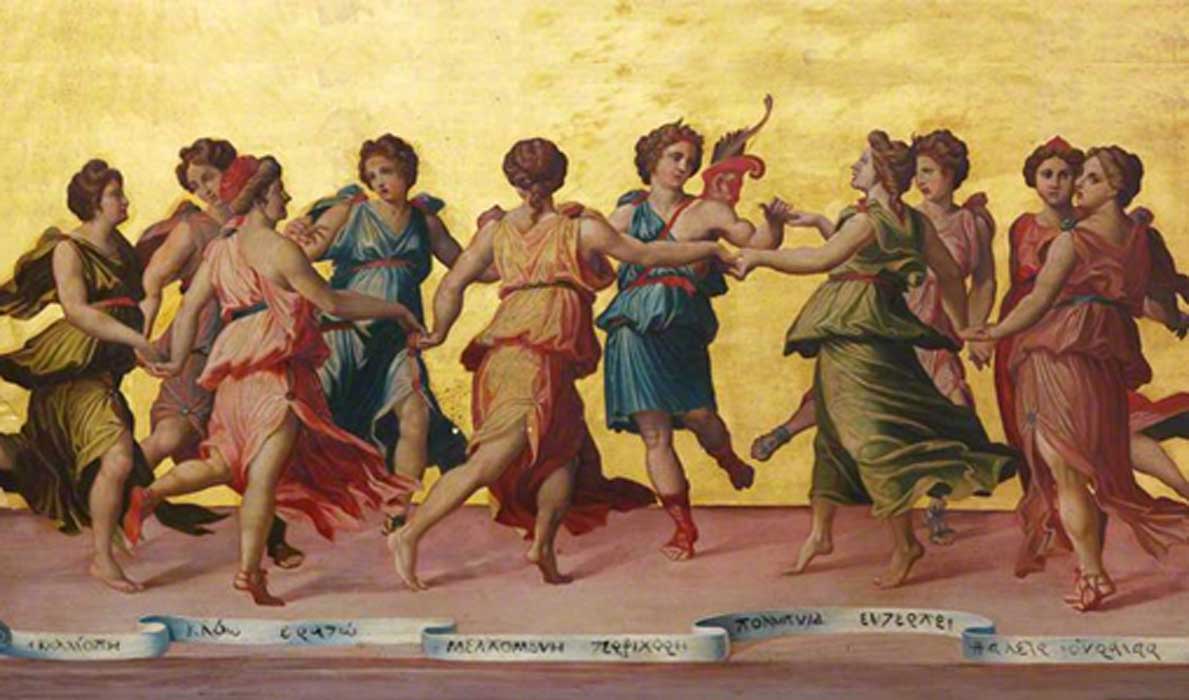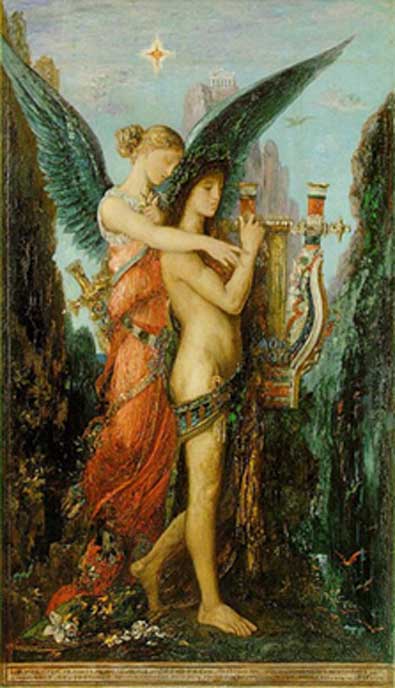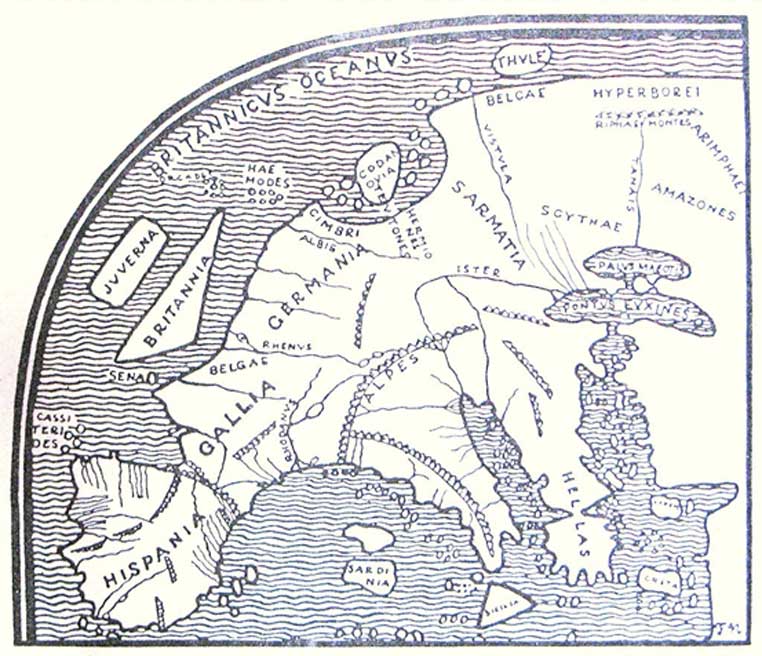
Demystifying the Nine Sorceresses at the Center of Time
Myths, folklore ancient songs and poems present the number ‘nine’ as being connected with the underworld, and this has been extended into modern pop culture. There were ‘nine circles of Hell’ in Dante's Divine Comedy; in J.R.R. Tolkien's Middle-earth men were given ‘nine rings of power’ and in Roman Polanski’s 1999 mystery thriller The Ninth Gate, the protagonist played by Johnny Depp, embarks on a dark esoteric quest through nine levels of Biblical mystery.

Hesiod and the Muse by Gustave Moreau (1891) - Musée d'Orsay, Paris. (Public Domain)
While the literary devices of nine gates, nine circles and nine rings dominate modern fictional writings, in ancient times, religions, myths, legends, songs, poems and stories featured groups of nine goddesses, mothers, maidens, daughters, sisters and sorceresses and to understand what these nine females originally represented, one must look to ancient Greece.
Questing the Ancient Origins of Nine Supernatural Females
In ancient Greek mythology, according to an account written by Hesiod about 600 BC, the ‘Nine Muses’ were the daughters of Zeus and Mnemosyn (‘Memory’ personified). Regarded as the personification and source of the secret knowledge embodied in song, mime, writing, traditional music and poetry they later featured in the Roman pantheon. In 43 AD Pomponius Mela, the earliest Roman geographer, wrote about: “a group of nine sorceresses… on an island in the west in the Britannic Sea… famous for its oracle, whose priestesses, sanctified by perpetual virginity are reportedly nine in number.”

Pomponius Mela's map of Europe, printed by F. Nansen in 1911. The Britannic Sea can be seen in the upper left. (Public Domain)
Scholar George Kish, in his 1978 book A Source Book in Geography, detailed Mela’s description of the nine sorceresses: “they have been endowed with unique powers, they stir up the seas and winds by their magic charms, that they turn into whatever animals they want, that they cure what is incurable among other peoples, that they know and predict the future.” Mela’s 1st century account recorded the supernatural attributes most often associated with the nine females within world myths, which were: island dwellers, shape shifters, healers, controllers of the weather and the ability to predict future events.
In Scotland, according to James Cargill Guthrie’s 1875 book Legend of the Nine Maidens, when the 8th century Saint Donald of Ogilvy died, King Garnard of the Picts granted his daughters, the ‘Holy Nine Virgins’, lodgings in a monastery founded by saints Darlugdach and Brigid in the Pictish capital of Abernathy. At their repose a shrine was erected at the foot of a large oak which was: “known as the Abernathy Allon-bacuth” and until the Anglican Reformation, the sacred site of the ‘nine virgins’: “was a much-frequented site of pilgrimage.”
- From the Ancient Greek Pleiades to the Hindu Matrikas: Mother Goddesses, Music and the Sacred Number 7
- The Nine Worlds of Norse Mythology
- Seers, Women of Action: The Sibyls of the Ancient World
Among the many churches dedicated to ‘nine maidens’ in Scotland are the ancient church of Finhaven in Forfarshire, a chapel at Pitsligo and another in Aberdeenshire called the ‘Chapel of the Nine Maidens’. A few miles north of Dundee on Scotland’s east coast at Strathmartine, according to the Saints in Scottish Place-Names website: “In 1794 a legend relating to this spring recorded ‘nine Maidens’ being devoured by a dragon, which was ultimately slain by a person called Martin. This location was later marked with a medieval Pictish carved stone called Martin’s Stone, which depicts a serpent, and a local story tells that the nine maidens were turned into stone as punishment for dancing on a Sunday.”





